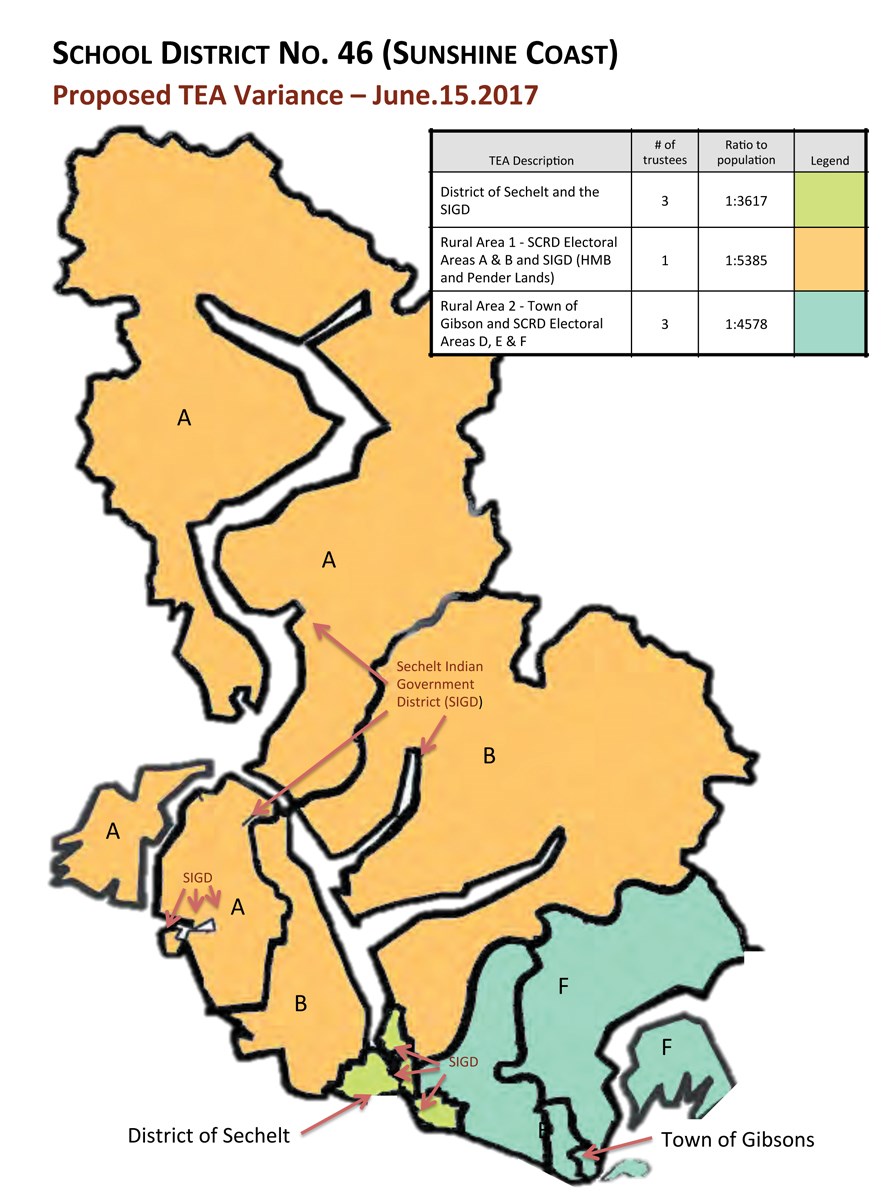School District No. 46 (SD46) trustee electoral areas have been redrawn to include shíshálh Nation lands that had previously been excluded.
Seven trustees are now grouped according to the following geography: one trustee from Sunshine Coast Regional District (SCRD) Areas A and B (Pender Harbour/Egmont and Halfmoon Bay) and shíshálh Nation band lands, three trustees from the District of Sechelt and shíshálh Nation band lands, and three trustees from the Town of Gibsons and SCRD Areas D, E and F (Roberts Creek, Elphinstone and West Howe Sound).
The reason for the change is twofold. In 2016 the ministry acknowledged that shíshálh Nation lands had been omitted from “metes and bounds” or voting districts, and to ensure the ratio of voters to trustees is equal in each riding.
The changes were brought into effect this February with an order from the Ministry of Education. Constituents will vote according to these new boundaries at the trustee elections on Oct. 20.
“It takes away the mystery of where you’re going to vote,” said Lori Pratt, board of education chair, noting that voting ratios are more accurate and the three trustees in the Sechelt area take into account that region’s growing population.
Nick Weswick, SD46 secretary-treasurer, said the previous boundaries were not as cleanly mapped. “In some cases you had a family that lived on one side of Reed Road who sends their child to Gibsons Elementary, voting for a different ballot of trustees than the family that lives on the other side of Reed Road, even though both families sent their kids to Gibsons Elementary,” he said.
Beginning in 2016, SD46 board members and staff devised several options for redrawing the areas to achieve both goals and solicited feedback from local governments before proceeding with public consultations.
Gibsons did not indicate a preference, while Sechelt did not provide any feedback. Both the SCRD and the shíshálh Nation requested that shíshálh Nation band lands be designated one trustee electoral area with an elected trustee. Because voter parity is the principal factor for deciding electoral boundaries according to ministry guidelines, the board rejected this option since it would have led to a significant imbalance.
“When we were going through the consultation process we weren’t hearing it from the public to bring it forward … and it was very clear from the ministry when it had brought through in the past that it was too low of a ratio for number of voters to number of elected officials,” Pratt said.
“We discussed it extensively at a number of meetings … and it was felt that putting an additional seat into Sechelt would help to increase the potential of more Indigenous people running, as well as tapping people on the shoulder and encouraging more [Indigenous] women and men to run.”
Redrawing electoral areas has been a long-time goal for SD46, and this marks the second attempt. In 2011, the board requested to combine Gibsons with Areas D, E and F into a single voting area, in addition to folding the previously excluded shíshálh Nation lands into the Sechelt trustee electoral area. The request fell through because the ministry said SD46 failed to seek enough consultation.



